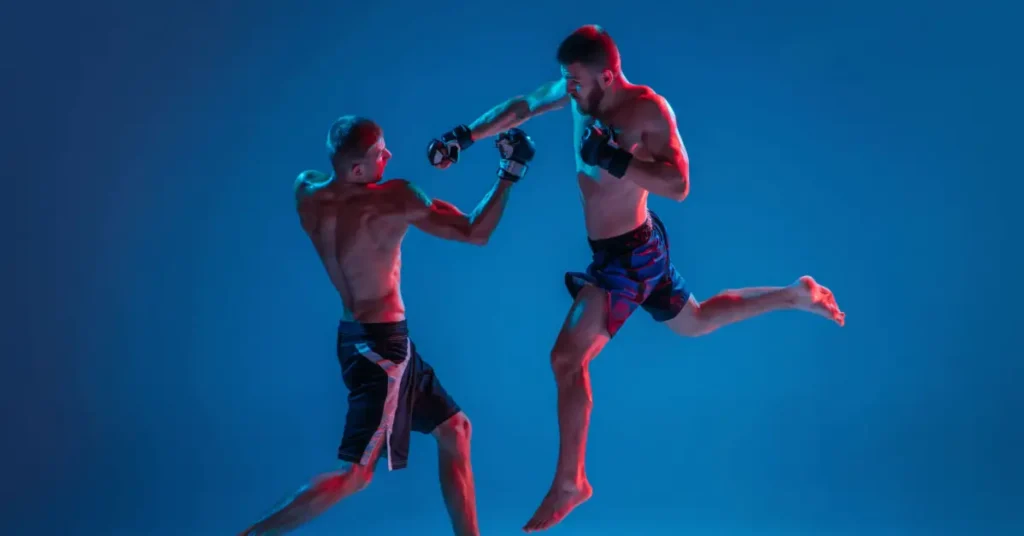Mental conditioning, the practice of psychological skills’ cultivation for performance enhancement, is paramount in the demanding arena of combat sports. It’s the differentiating factor between technical proficiency and true fighting prowess. A warrior’s mind, honed through dedicated practice, dictates not only strategic execution but also the ability to manage the intense physiological and emotional pressures of combat.
Key Takeaways:
- Mental conditioning is as crucial as physical training for combat sports success.
- Advanced techniques like visualization, meditation, and biofeedback offer significant performance advantages.
- Integrating mental and physical practices creates a holistic approach to combat preparation.
Table of Contents
Foundations of Mental Strength
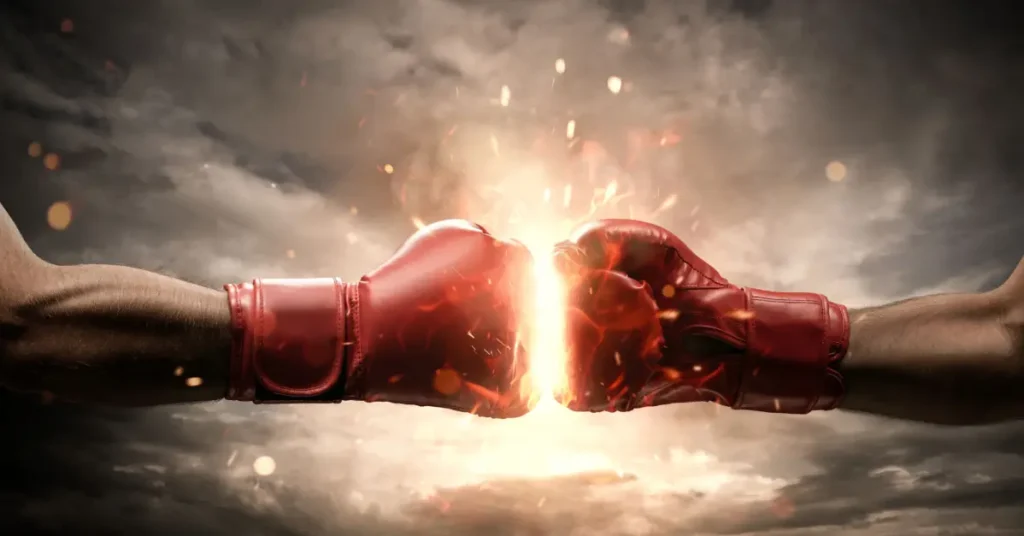
Mental strength in combat sports is the bedrock upon which technical skills and physical prowess are built. It’s the capacity to maintain focus under duress, manage fear and anxiety, and make sound decisions amidst the chaos of a fight. This foundational strength arises from understanding the interplay between mind and body, leveraging neuroscientific principles, and developing core psychological skills.
| Concept | Description | Benefits |
|---|---|---|
| Mind-Body Connection | The interconnectedness of mental and physical states. | Enhanced awareness, improved control over physiological responses, increased resilience. |
| Neuroscience of Peak Performance | Understanding how the brain functions under pressure. | Optimized training strategies, improved decision-making under stress, enhanced cognitive function. |
| Core Psychological Skills | Focus, stress management, resilience, and self-confidence. | Improved concentration, emotional regulation, ability to bounce back from setbacks, enhanced self-belief. |
The Mind-Body Connection in Combat
The mind-body connection is not a philosophical concept but a tangible physiological reality. Neurotransmitters and hormones act as messengers, relaying information between the brain and the body, influencing everything from muscle tension to reaction time in sports performance. Ancient practices like those of Kung Fu monks, who for centuries have honed their fighting skills through rigorous mental and physical disciplines, exemplify this connection. Their training emphasizes not just physical strength but also the cultivation of inner peace and mental clarity, demonstrating the synergistic relationship between a focused mind and a responsive body. This holistic approach allows them to execute complex movements with precision and power, demonstrating the practical application of the mind-body principle in combat.
Disciplines like Qigong and Tai Chi Chuan, integral to traditional Kung Fu training, further illustrate this connection. These practices involve slow, deliberate movements coordinated with deep, controlled breathing, fostering a heightened awareness of internal energy flow (Qi) and its influence on physical action. This mindful approach to movement cultivates a deep understanding of the body’s mechanics and its responsiveness to mental commands, enhancing both physical and mental control.
Neuroscience of Peak Performance
Neuroscience provides a scientific framework for understanding how the brain operates under the extreme conditions of combat. The amygdala, the brain’s emotional center, plays a crucial role in processing fear and anxiety. During a fight, the amygdala can trigger the release of stress hormones like cortisol and adrenaline, leading to increased heart rate, muscle tension, and potentially impaired decision-making. Understanding these neurological processes is necessary for developing effective strategies to manage pre-fight anxiety and maintain composure under pressure. Techniques like mindfulness meditation and deep breathing (e.g. box/square breathing) can help regulate the amygdala’s response, allowing fighters to remain calm and focused even in high-stakes situations, which is an important strategy for mental toughness training.
Neuroscience reveals the brain’s remarkable plasticity, its ability to adapt and rewire itself through experience. Repeated exposure to stressful situations, coupled with effective coping mechanisms, can actually strengthen the neural pathways associated with resilience and emotional control. This means that fighters can train their brains to become more resistant to the negative effects of stress, enhancing their ability to perform under pressure.
Psychological Skills
Core psychological skills are essential mental tools for combat success. Focus, the ability to maintain concentrated attention, is paramount in a fast-paced fight, particularly in mixed martial arts. It allows fighters to anticipate their opponent’s moves, react quickly to changing circumstances, and execute their techniques with precision. Stress management involves regulating emotional and physiological responses to pressure. Techniques like diaphragmatic breathing and progressive muscle relaxation can help fighters control pre-fight anxiety and maintain composure during competition. Resilience, the ability to bounce back from setbacks, is also important for overcoming challenges and maintaining a positive mindset throughout training and competition. It allows fighters to learn from their mistakes, adapt to adversity, and persevere in the face of defeat.
Self-confidence, the belief in one’s own abilities, is the cornerstone of mental toughness. It empowers fighters to take risks, push their limits, and perform at their best. Cultivating self-confidence involves setting realistic goals, focusing on past successes, and using positive self-talk to reinforce a belief in one’s own capabilities.
Advanced Mental Conditioning Techniques
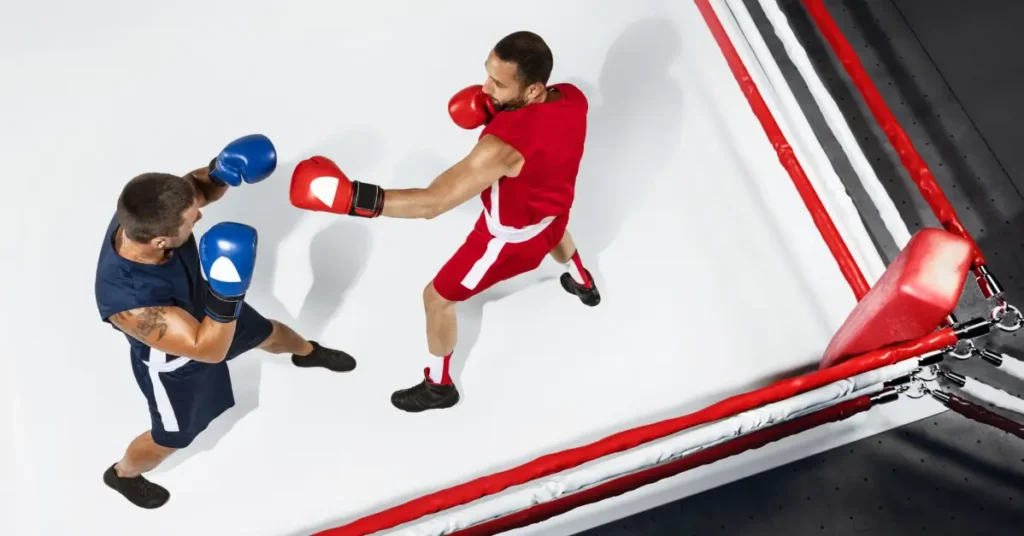
Advanced mental conditioning techniques provide combat athletes with cutting-edge tools to elevate their mental game. These techniques go beyond basic psychological skills, delving into the intricate workings of the mind and body to optimize performance. Visualization, advanced meditation, and biofeedback are effective methods for enhancing focus, managing stress, and improving reaction time.
| Technique | Description | Benefits |
|---|---|---|
| Sports Visualization | Mental rehearsal of actions and outcomes. | Improved technique, enhanced anticipation, increased confidence. |
| Advanced Meditation | Deep meditative practices for enhanced mental control. | Improved focus, emotional regulation, stress reduction. |
| Biofeedback | Using technology to monitor and control physiological functions. | Stress management, improved reaction time, enhanced self-awareness. |
Sports Visualization for Combat Success
Sports visualization, the mental rehearsal of actions and outcomes, is a powerful tool for improving performance in combat sports. By vividly imagining themselves executing techniques with precision and power, fighters can enhance their neuromuscular coordination and improve the efficiency of their movements. Visualization also allows fighters to anticipate their opponent’s actions and develop effective counter-strategies. By mentally rehearsing different scenarios, fighters can prepare themselves for the unpredictable nature of combat and improve their ability to adapt to changing circumstances. This mental preparation can significantly boost confidence and reduce pre-fight anxiety, allowing fighters to enter the ring with a sense of calm and control.
Visualization can be used to enhance specific aspects of performance, such as improving striking accuracy or refining grappling techniques. Focusing on the precise details of their movements allows fighters can identify and correct technical flaws, leading to more efficient and effective execution. Visualization can also be used to mentally rehearse pre-fight routines, helping fighters to establish a consistent and focused mindset before competition.
Advanced Meditation Practices
Advanced meditation practices offer combat athletes a pathway to deeper levels of mental control and emotional regulation. Techniques like Tummo, The Wim Hof Method, ninjutsu meditation or psychosomatic training involve focusing on one’s body (and its physiological state) as well as mental states (emotions, sensations, and so on). Such practice can help fighters to manage pre-fight anxiety, reduce distractions, and maintain focus during competition. Other techniques, such as introspective meditation or Samatha-vipassanā, delve into the intricacies of mental processes, cultivating deeper levels of self-awareness and emotional control.
These practices can be integrated into a fighter’s training regimen to enhance focus, manage stress, and improve emotional regulation. Regular meditation can lead to increased gray matter in the brain regions associated with attention and emotional control, further enhancing a fighter’s ability to perform under pressure.
Warning: Ancient meditation techniques like Tummo (inner fire) meditation and ninjutsu meditation offer historical context and unique perspectives on mental discipline, however, they should be approached with caution as they can influence the body’s physiology.
Biofeedback for Performance Optimization
Biofeedback utilizes technology to provide real-time feedback on physiological functions like heart rate, muscle tension, and brainwave activity. This information empowers fighters to gain greater awareness of their body’s responses to stress and learn to control these responses consciously. By practicing biofeedback techniques, combat athletes can learn to regulate their heart rate variability, reduce muscle tension, and optimize their brainwave patterns for peak sports performance. This can be particularly beneficial for managing pre-fight anxiety and improving reaction time during competition. Biofeedback can also be used to enhance recovery after training, promoting faster healing and reducing the risk of injury.
Biofeedback-supported training strategies have been a part of the martial arts world for a long time. Scientific research consistently proves that incorporating biofeedback training into contact sports, such as boxing, can effectively improve athletic performance1 (which makes the whole pre-fight preparation period much easier). However, to proficiently measure the effectiveness of such tactics, it’s worth testing the outcomes on high-quality equipment provided by a well-known wholesale boxing equipment manufacturer. This way you know that your punching bags are going to last ;).
Optimizing Physiology for Mental Fortitude
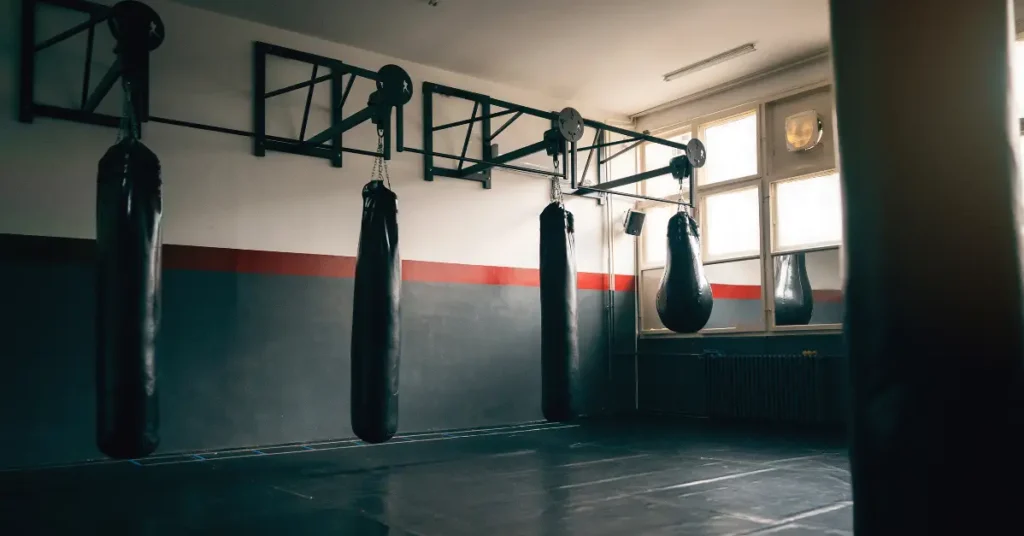
Optimizing physiology is another important component of mental conditioning for combat sports. By regulating breathing, utilizing targeted supplementation, and integrating physical and mental training, fighters can enhance their physiological resilience and support optimal mental performance. These practices work synergistically to create a state of peak physical and mental readiness for the demands of combat.
| Practice | Description | Benefits |
|---|---|---|
| Advanced Breathing Techniques | Controlled breathing patterns to regulate physiological responses. | Stress reduction, improved focus, enhanced stamina. |
| Supplementation | Strategic use of supplements to support mental and physical function. | Enhanced cognitive function, improved stress resistance, optimized recovery. |
| Integrated Training | Combining physical and mental training for holistic development. | Improved performance, enhanced resilience, reduced risk of injury. |
Advanced Breathing Techniques
Advanced breathing techniques are tools for regulating physiological responses and enhancing mental fortitude. Techniques like diaphragmatic breathing, also known as belly breathing, involve deep, slow breaths that engage the diaphragm and fully expand the lungs. This type of breathing can activate the parasympathetic nervous system and stimulate the vagus nerve, promoting relaxation and reducing anxiety. Box breathing, a technique commonly used by Navy SEALs, involves inhaling, holding, exhaling, and holding for equal counts. This rhythmic breathing pattern can help to regulate heart rate, calm the nervous system, and improve focus under pressure. Other techniques, such as alternate nostril breathing (known as Nadi Shodhana in the yogic tradition) and coherent breathing, can further enhance respiratory efficiency and promote a state of calm alertness.
The Role of Sports Supplementation
Combat sports demand peak physical and mental performance. While rigorous training and proper nutrition form the foundation, strategic supplementation can provide a competitive edge.
Rhodiola rosea, a powerful adaptogen sourced from the Arctic regions of Europe and Asia, is renowned for its ability to bolster the body’s stress response. This translates to improved stamina during intense training sessions, faster recovery times, and enhanced mental focus under pressure. Studies indicate Rhodiola can increase time to exhaustion and improve performance in high-intensity activities, which is desired by combat athletes facing grueling rounds. Furthermore, its ability to modulate cortisol levels can help mitigate the detrimental effects of chronic stress associated with high-level competition.
N-Acetyl-L-Tyrosine (NALT), a readily absorbed form of the amino acid L-tyrosine, plays a critical role in neurotransmitter production, particularly dopamine and norepinephrine. These neurochemicals are essential for optimal cognitive function, including reaction time, decision-making, and focus – all vital in the fast-paced environment of combat sports. NALT supplementation can help maintain mental clarity and sharpness, even under conditions of fatigue and stress, allowing fighters to execute their strategies effectively.
Integrating Physical and Mental Training
Integrating physical and mental training is essential for creating a holistic approach to combat sports preparation. Physical training develops strength, speed, rate of force development, and technical skills, while mental conditioning enhances focus, resilience, and emotional control. By combining these two aspects of training, fighters can create a synergistic effect that optimizes performance and reduces the risk of injury. For example, incorporating mindfulness meditation into warm-up routines can enhance focus and reduce pre-fight anxiety. Practicing visualization during strength training can improve neuromuscular coordination and enhance the efficiency of movements. Integrating mental skills training into sparring sessions can improve decision-making under pressure and enhance adaptability to changing circumstances.
Putting it All Together: A Warrior’s Mindset
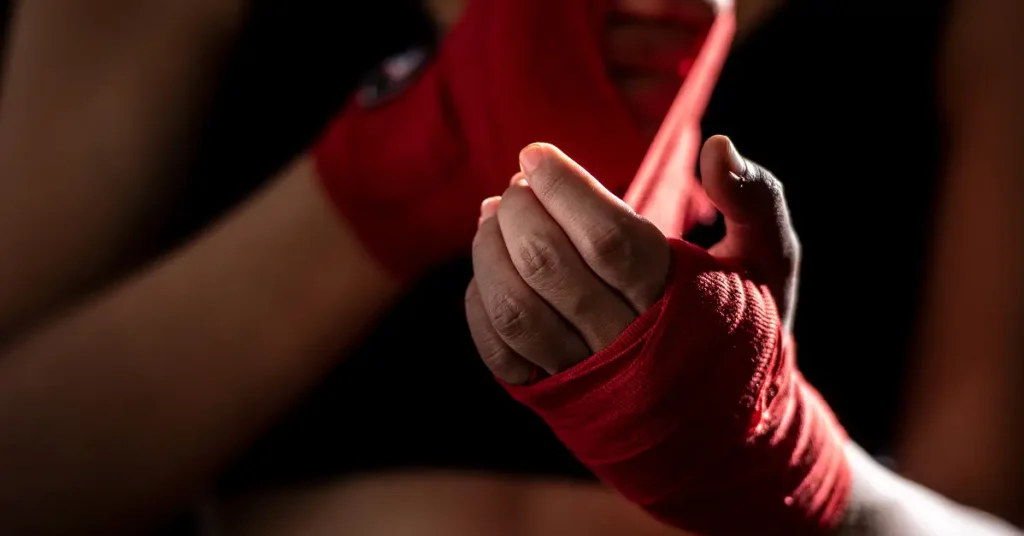
Developing a warrior’s mindset involves integrating all aspects of mental and physical training to create a cohesive and effective approach to combat sports. This involves establishing a pre-fight routine, maintaining mental toughness during competition, and engaging in post-fight analysis and reflection.
| Aspect | Description | Benefits |
|---|---|---|
| Pre-Fight Routine | A structured sequence of activities to prepare mentally and physically for competition. | Enhanced focus, reduced anxiety, improved performance. |
| Mental Toughness During Competition | Maintaining composure, focus, and adaptability under pressure. | Improved decision-making, enhanced resilience, increased likelihood of success. |
| Post-Fight Analysis | Reviewing performance to identify areas for improvement. | Continued growth, enhanced self-awareness, optimized training strategies. |
Developing a Pre-Fight Routine
A pre-fight routine is a personalized sequence of activities designed to prepare a fighter mentally and physically for competition. This routine should incorporate elements of physical warm-up, mental rehearsal, and relaxation techniques. The physical warm-up prepares the body for the demands of combat, while mental rehearsal, using visualization and positive self-talk, enhances focus and confidence. Relaxation techniques, such as deep breathing and meditation, help to manage pre-fight anxiety and promote a state of calm alertness. The pre-fight routine should be consistent and tailored to the individual fighter’s needs and preferences.
Maintaining Mental Toughness During Competition
Maintaining mental toughness during competition requires the ability to manage stress, maintain focus, and adapt to unexpected situations, which are effective strategies for mental resilience. When faced with adversity, such as a powerful strike from an opponent or a challenging grappling exchange, fighters must be able to regulate their emotional responses and maintain a clear head. The mental techniques of self-talk, focusing on the present moment, and visualizing successful outcomes can help fighters to stay composed and make effective decisions under pressure. The ability to adapt to changing circumstances is also crucial. A fighter must be able to adjust their strategy based on their opponent’s actions and the flow of the fight, demonstrating mental discipline.
A fact to remember: Mental toughness is not about suppressing emotions, but about managing them effectively and channeling them into focused action.
Post-Fight Analysis and Reflection
Post-fight analysis and reflection are essential for continued growth and development. After each competition, combat sport athletes should review their performance, identifying both strengths and weaknesses to develop mental resilience. This analysis should encompass not only technical aspects of the fight but also mental and emotional factors. What were the key moments that influenced the outcome of the fight? How effectively did the fighter manage stress and maintain focus? What were the emotional responses to different situations during the fight, and how can they inform strategies for mental resilience? By honestly assessing their performance, fighters can gain valuable insights into their strengths and weaknesses, allowing them to refine their training strategies and improve their overall performance.
Another fact to remember: Post-fight analysis is not about dwelling on mistakes, but about learning from them and using them as opportunities for growth.

